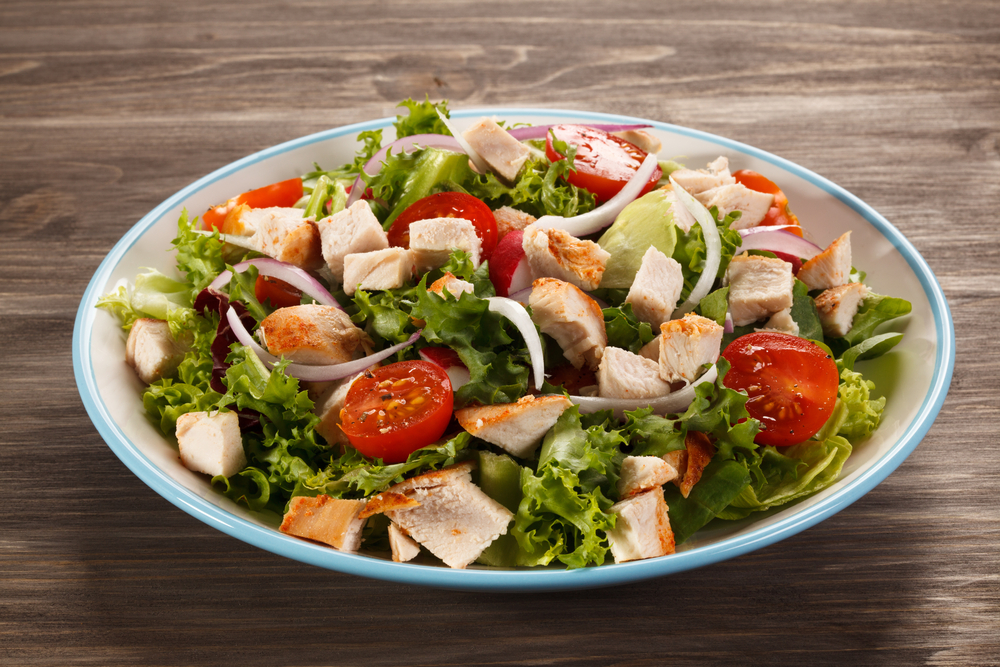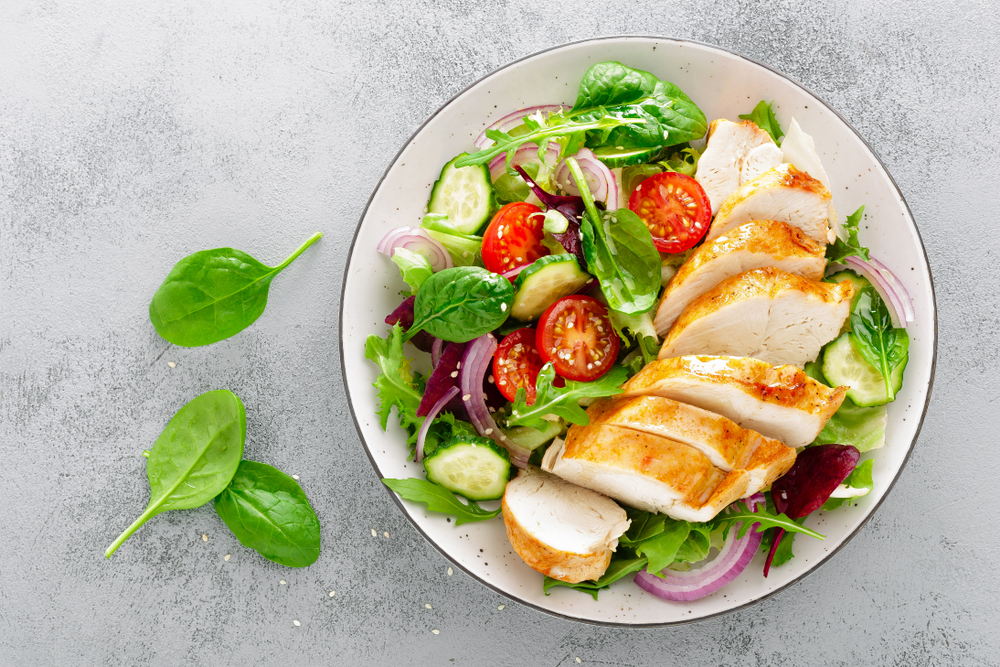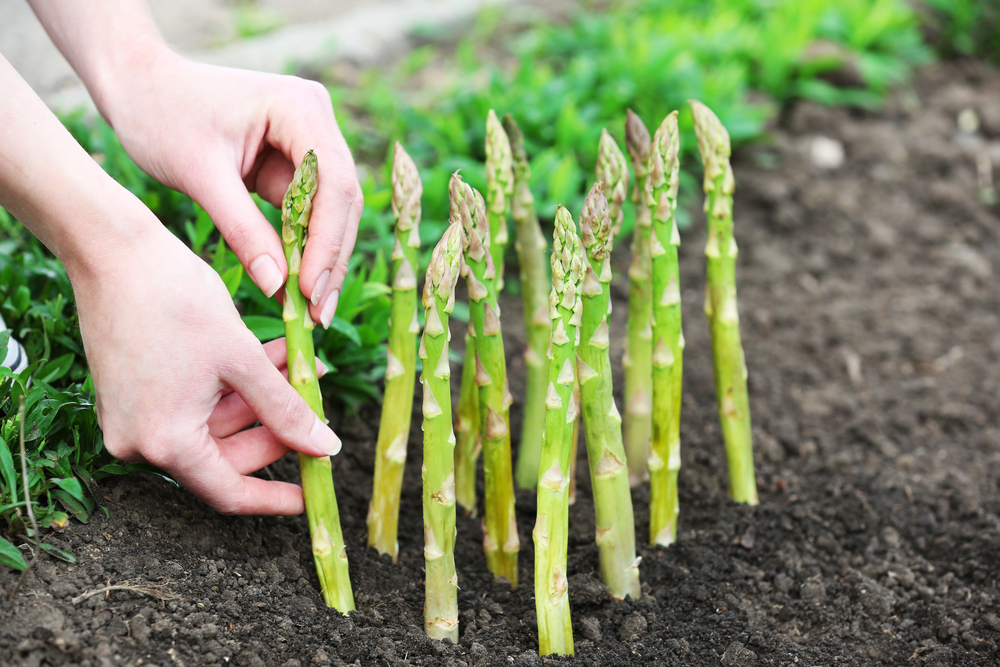Asparagus is a delicious and healthy vegetable that can be served in many different ways. Whether you’re making a side dish for dinner or adding it to a salad, asparagus is a great choice.
However, if you have leftover asparagus, you may be wondering how to reheat it without losing its flavor and texture.
In this article, I will share some tips and tricks for reheating asparagus so that it tastes just as good as it did when it was freshly cooked.
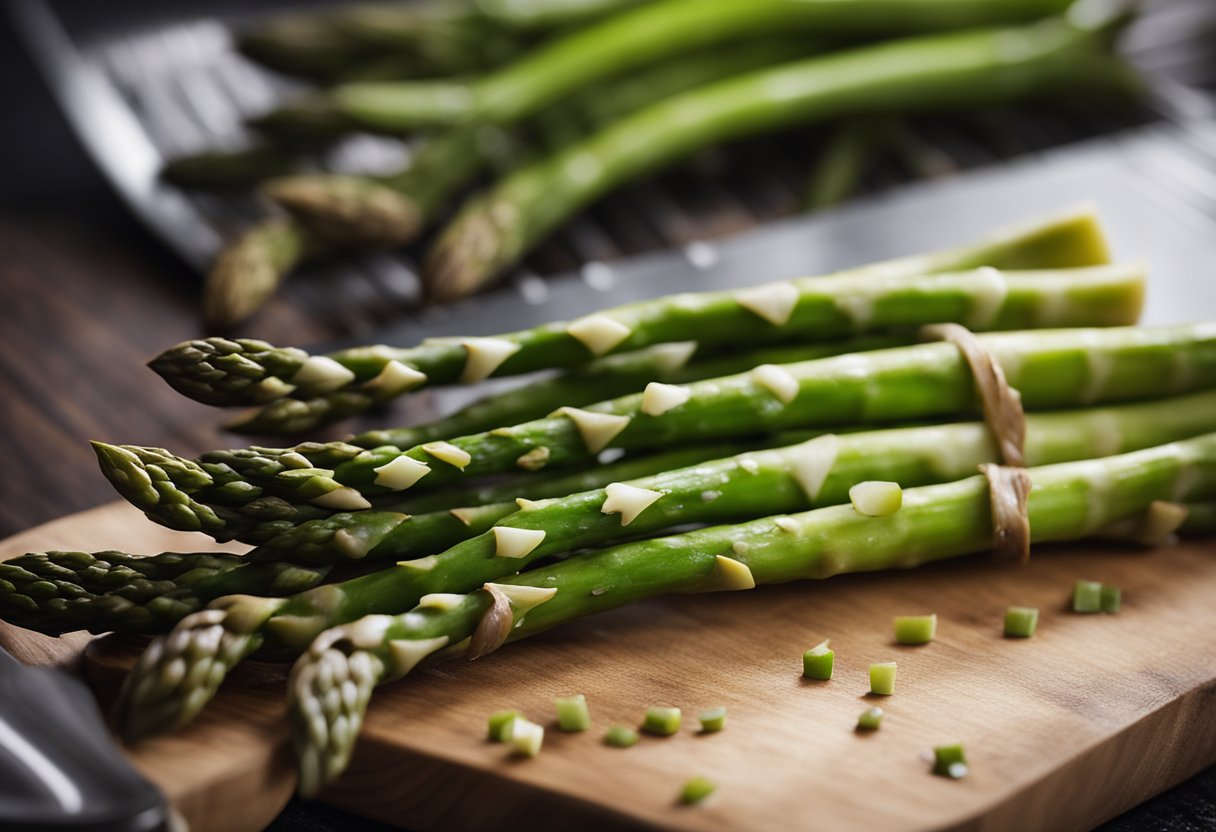
The first step in reheating asparagus is to choose and prepare it correctly. You want to make sure that you select fresh asparagus that is not wilted or slimy.
To prepare the asparagus, you should trim the ends and wash it thoroughly. Then, you can roast it in the oven or sauté it in a pan with some olive oil and seasonings.
Once the asparagus is cooked, you can store it in the refrigerator for up to three days.
When it’s time to reheat the asparagus, there are several methods you can use. You can reheat it in the oven, microwave, or on the stovetop.
Each method has its pros and cons, and the best method for you will depend on your preferences and the equipment you have available.
In the next section, I will go over each method in more detail and provide some tips for getting the best results.
Key Takeaways
- Choose and prepare fresh asparagus before cooking.
- Reheat asparagus in the oven, microwave, or on the stovetop.
- Add some extra flavor by using seasonings and serving with a variety of sauces and toppings.
Choosing and Preparing Asparagus
When it comes to reheating asparagus, choosing the right asparagus and preparing it properly are crucial to achieving the best results.
Asparagus is a healthy vegetable that is low in calories, high in fiber, and packed with vitamins and minerals, including Vitamin A, Vitamin C, calcium, iron, and potassium.
When selecting asparagus, look for firm, straight stalks with tightly closed tips and a bright green color. Avoid asparagus with wilted or slimy tips or stalks that are soft or discolored.
Thin asparagus is more tender and cooks faster than thick asparagus, but both types can be reheated using the same methods.
Before reheating asparagus, it’s important to trim the woody ends off the stalks. To do this, hold the asparagus spear at both ends and gently bend it until it snaps.
The point where the spear breaks is where the woody part ends and the tender part begins. Discard the woody ends and rinse the asparagus under cold water to remove any dirt or debris.
When reheating asparagus, there are several methods to choose from, including steaming, sautéing, and microwaving. Each method has its own advantages and disadvantages, so choose the method that best suits your needs and preferences.
No matter which method you choose, be sure to season the asparagus with salt, pepper, and any other herbs or spices you like.
You can also add a drizzle of olive oil or a pat of butter for extra flavor. With the right preparation and reheating method, your asparagus will be just as delicious and healthy as when it was first cooked.
Roasting Asparagus
When it comes to reheating asparagus, roasting is one of the best methods. It’s quick, easy, and brings out the natural flavors of the asparagus.
Here’s how I like to roast asparagus:
- Preheat your oven to 400°F (200°C).
- Wash the asparagus and trim off the tough ends.
- Arrange the asparagus in a single layer on a baking sheet lined with parchment paper or foil.
- Drizzle with olive oil and season with salt and pepper to taste.
- Toss the asparagus to coat evenly with the oil and seasoning.
- Roast for 10-15 minutes, or until the asparagus is tender and slightly browned.
If you want to add some extra flavor to your roasted asparagus, try adding some minced garlic, lemon zest, or grated Parmesan cheese before roasting. You can also squeeze some fresh lemon juice over the asparagus after roasting for a bright and tangy flavor.
Overall, roasting asparagus is a simple and delicious way to reheat this tasty vegetable. Give it a try and see how easy it is to enjoy perfectly roasted asparagus every time!
Storing and Reheating Asparagus
Asparagus is a delicate vegetable that requires proper storage to maintain its freshness and flavor. Here are some tips on how to store and reheat asparagus:
Storing Asparagus
When you bring home fresh asparagus, it is best to store it in the refrigerator to keep it fresh for longer. To store asparagus, follow these steps:
- Trim the ends of the asparagus by cutting off about an inch from the bottom.
- Fill a pan or container with an inch or two of water.
- Stand the asparagus upright in the pan or container, with the trimmed ends in the water.
- Cover the asparagus loosely with a plastic bag or wrap.
This method helps to keep the asparagus fresh for up to a week in the refrigerator.
Reheating Asparagus
If you have leftover asparagus and want to reheat it, there are a few methods you can use:
Microwave
To reheat asparagus in the microwave, follow these steps:
- Place the asparagus in a microwave-safe dish.
- Cover the dish with a damp paper towel.
- Microwave on high for 30 seconds to 1 minute, depending on the quantity of asparagus.
Pan
To reheat asparagus on the stove, follow these steps:
- Heat a pan over medium-high heat.
- Add a tablespoon of oil or butter to the pan.
- Add the asparagus to the pan and cook for 2-3 minutes, stirring occasionally.
Air Fryer
To reheat asparagus in an air fryer, follow these steps:
- Preheat the air fryer to 375°F (190°C).
- Lightly spritz the asparagus with oil (optional) and sprinkle on any seasoning you want.
- Arrange the asparagus in a single layer in the air fryer basket.
- Heat the asparagus for 1-2 minutes.
Leftovers
If you have leftover asparagus, store it in an airtight container in the refrigerator. Leftover asparagus can be eaten cold or reheated using one of the methods above.
Room Temperature
Asparagus should not be left at room temperature for more than two hours. If you are serving asparagus as part of a meal, it is best to keep it in the refrigerator until just before serving.
By following these tips, you can store and reheat asparagus to maintain its freshness and flavor.
Serving Suggestions and Recipe Variations

When it comes to serving asparagus, there are many options to choose from. As a versatile vegetable, it can be paired with a variety of main dishes, sides, and salads.
Here are some serving suggestions and recipe variations to try:
- As a Side Dish: Asparagus makes a great side dish to any meal, especially when roasted or sautéed. Pair it with roasted potatoes, rice, or any protein of your choice for a complete meal. For an extra kick of flavor, add lemon wedges or bacon bits on top.
- In Salads: Asparagus can be a great addition to any salad. Roasted or sautéed asparagus pairs well with roasted broccoli, roasted carrots, or broccolini. Add some feta cheese, nuts, or seeds for some extra crunch and flavor.
- Recipe Variations: Asparagus can be cooked in many different ways, so don’t be afraid to experiment. Try adding some garlic or herbs to your roasted or sautéed asparagus for an extra burst of flavor. You can also wrap asparagus spears in bacon or prosciutto for a delicious appetizer or side dish.
Overall, asparagus is a great vegetable to have on hand for any meal. It’s versatile, healthy, and easy to prepare. Whether you’re looking for a side dish or a main course, asparagus is sure to please.
Additional Tips for Asparagus
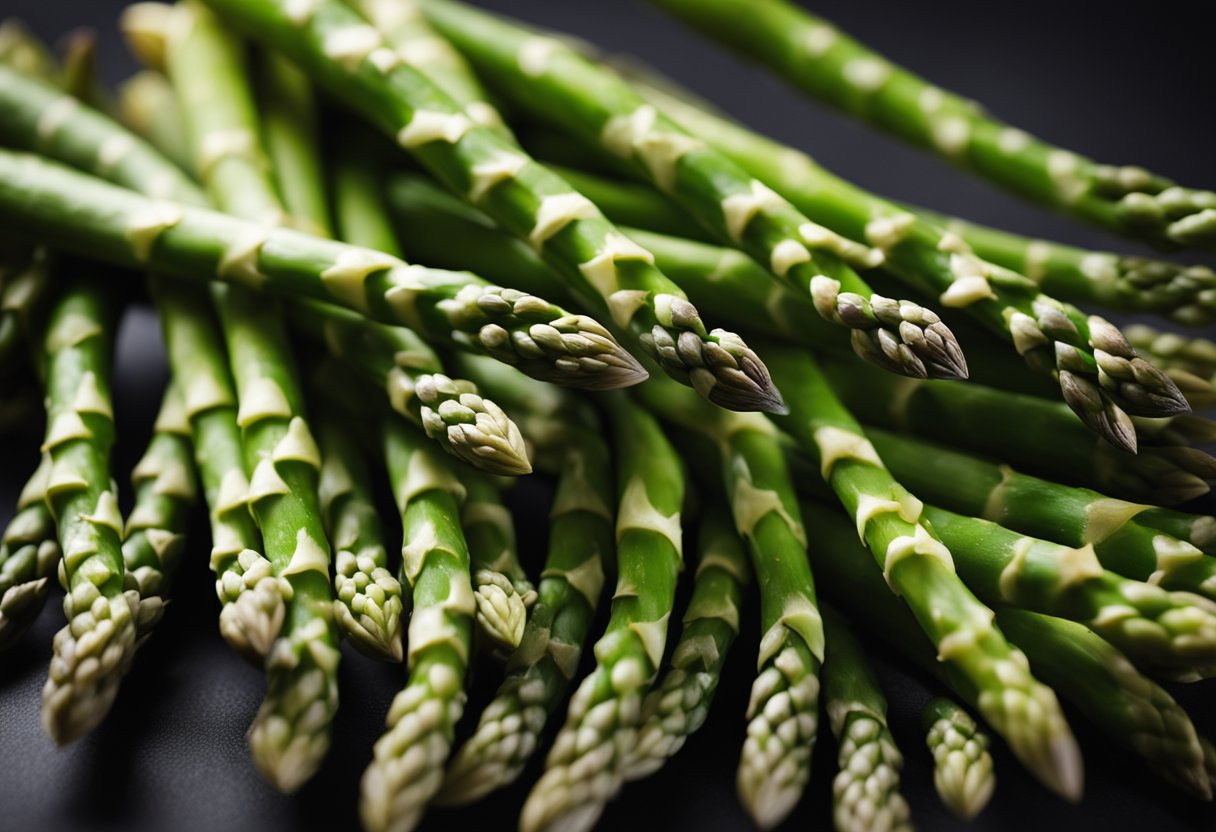
Asparagus is a versatile vegetable that can be prepared in many ways. Here are some additional tips for cooking and serving asparagus:
- Cheese: Asparagus pairs well with cheese. Try sprinkling grated Parmesan or crumbled feta on top of cooked asparagus for added flavor.
- Water: When cooking asparagus, use a large pot of salted boiling water. This will help the asparagus cook evenly and retain its bright green color.
- Blanch: Blanching is a great way to cook asparagus if you want it to be tender but still have some bite. To blanch asparagus, cook it in boiling water for 1-2 minutes, then transfer it to a bowl of ice water to stop the cooking process.
- Black pepper and red pepper flakes: Asparagus can be seasoned with black pepper or red pepper flakes for added flavor and spice.
- Freeze: Asparagus can be frozen for later use. To freeze asparagus, blanch it for 1-2 minutes, then transfer it to a bowl of ice water. Drain the asparagus and pat it dry, then place it in a freezer-safe container or bag.
- Stove: Asparagus can be cooked on the stove in a variety of ways, including sautéed, grilled, or charred.
- Tender asparagus: To ensure that asparagus is tender, cook it until it is easily pierced with a fork.
- Minced garlic: Adding minced garlic to asparagus can add flavor and depth to the dish.
- Asparagus season: Asparagus is in season in the spring, so it is best to eat it during this time for the freshest taste.
- Balsamic reduction: A balsamic reduction can be drizzled over cooked asparagus for added flavor and sweetness. To make a balsamic reduction, simmer balsamic vinegar in a small saucepan until it has thickened and reduced in volume.
- Roasted Brussels sprouts and cauliflower: Asparagus pairs well with roasted Brussels sprouts and cauliflower for a delicious and nutritious side dish.
- Garlic powder: Garlic powder can be used to season asparagus for added flavor and convenience.
- Blanching: Blanching asparagus before grilling or sautéing can help it cook more evenly and quickly.
- Omelet: Asparagus can be added to omelets for a nutritious and filling breakfast.
- Grill: Grilling asparagus can add a smoky flavor to the dish.
- Boiling water: When blanching asparagus, use a large pot of boiling water to ensure that the asparagus cooks evenly.
- Grilled: Grilled asparagus can be served as a side dish or added to salads for added flavor and texture.
- Sauteed: Sauteed asparagus can be seasoned with herbs, spices, or lemon juice for added flavor.
- Charred: Charred asparagus can be served as a side dish or added to sandwiches or salads for added flavor and texture.
- Spring vegetable: Asparagus is a spring vegetable that is packed with nutrients, including fiber, folate, and vitamins A, C, and K.
- Nutrition information: Asparagus is low in calories and high in nutrients, making it a great choice for those who are watching their weight or trying to eat a healthy diet. One cup of cooked asparagus contains only 40 calories, 4 grams of protein, and 4 grams of fiber.
Frequently Asked Questions
What are some methods to reheat asparagus?
There are several methods to reheat asparagus, including using a microwave, oven, stovetop, or air fryer. Each method has its own advantages and disadvantages, so choose the method that works best for you.
How can I reheat asparagus in the air fryer?
To reheat asparagus in an air fryer, preheat the air fryer to 350°F. Place the asparagus in the air fryer basket and cook for 3 to 5 minutes, or until heated through. Be sure to shake the basket occasionally to ensure even heating.
Can you freeze cooked asparagus and reheat it later?
Yes, you can freeze cooked asparagus and reheat it later. However, freezing may affect the texture and quality of the asparagus.
To freeze cooked asparagus, place it in an airtight container or freezer bag and store it in the freezer for up to 3 months. To reheat, thaw the asparagus in the refrigerator overnight and then reheat using your preferred method.
Is it safe to eat cooked asparagus the next day?
Yes, it is safe to eat cooked asparagus the next day, as long as it has been stored properly in the refrigerator. However, the texture and flavor may not be as good as when it was freshly cooked.
What is the best way to store cooked asparagus?
The best way to store cooked asparagus is to place it in an airtight container or wrap it tightly in plastic wrap and store it in the refrigerator. Cooked asparagus should be consumed within 3 to 4 days.
Can you reheat leftover asparagus in the microwave?
Yes, you can reheat leftover asparagus in the microwave. To do so, place the asparagus on a microwave-safe plate and cover it with a damp paper towel.
Microwave on high for 30 seconds to 1 minute, or until heated through. Be sure to stir or flip the asparagus halfway through to ensure even heating.





